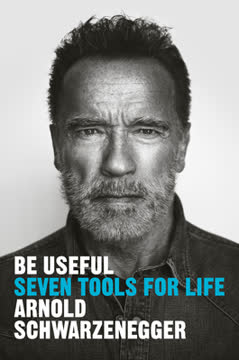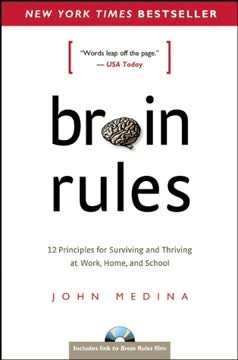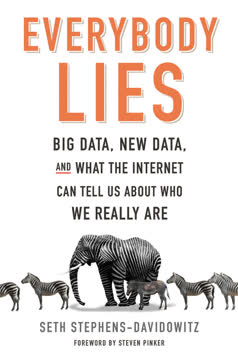النقاط الرئيسية
1. العلاقات العامة تبني العلامات التجارية، والإعلانات تحافظ عليها
"الإعلان ليس بناء العلامة التجارية. هذا هو دور ووظيفة العلاقات العامة. الإعلان هو صيانة العلامة التجارية."
العلاقات العامة تخلق، والإعلانات تحمي. العلاقات العامة هي الأداة الأساسية لإنشاء علامة تجارية في ذهن المستهلك. إنها تولد المصداقية من خلال تأييد الأطراف الثالثة والتغطية الإعلامية. بمجرد أن يتم تأسيس العلامة التجارية، تتولى الإعلانات لتعزيز موقع العلامة التجارية وحمايتها من المنافسين.
الأمثلة كثيرة. مايكروسوفت، ستاربكس، أمازون، وجوجل بنوا علاماتهم التجارية بشكل أساسي من خلال العلاقات العامة. حتى الصناعات التي تعتمد تقليديًا على الإعلانات بكثافة مثل صناعة البيرة شهدت نجاحات في العلاقات العامة مثل ريد بول، التي أصبحت ظاهرة عالمية مع إعلانات أولية قليلة.
الانتقال هو المفتاح. غالبًا ما تبدأ العلامات التجارية الناجحة بالعلاقات العامة وتنتقل إلى الإعلانات بمجرد أن تكتسب زخمًا. هذا يسمح لها ببناء المصداقية أولاً، ثم استخدام الإعلانات للحفاظ على موقعها وتذكير المستهلكين بهوية علامتها التجارية الراسخة.
2. المصداقية هي المفتاح: العلاقات العامة تمتلكها، الإعلانات تفتقر إليها
"الإعلانات ليس لها مصداقية. إنها الصوت الأناني لشركة متلهفة لتحقيق مبيعات."
الثقة هي الأهم. المستهلكون بطبيعتهم متشككون في الإعلانات لأنهم يرونها منحازة وأنانية. العلاقات العامة، من ناحية أخرى، تستفيد من مصداقية الأطراف الثالثة من خلال التغطية الإعلامية، وآراء الخبراء، والكلام الشفهي.
فجوة المصداقية تتسع. مع زيادة حجم الإعلانات، تقل فعاليتها. يتعرض المستهلكون لآلاف الإعلانات يوميًا، مما يؤدي إلى إرهاق الإعلانات وزيادة الشكوك. رسائل العلاقات العامة، التي يتم توصيلها من خلال مصادر موثوقة، تقطع هذا الفوضى.
المصداقية تترجم إلى أفعال. عندما يسمع المستهلكون عن علامة تجارية من خلال قنوات العلاقات العامة، يكونون أكثر عرضة لتصديق الرسالة والتصرف بناءً عليها. لهذا السبب غالبًا ما تشهد إطلاقات العلامات التجارية المدفوعة بالعلاقات العامة تبنيًا أسرع وولاءً أقوى للعملاء مقارنةً بالإطلاقات المدفوعة بالإعلانات.
3. قوة أن تكون الأول في فئة جديدة
"لا يمكنك أن تصبح مشهورًا إذا لم تكن الأول في شيء ما."
أنشئ مكانتك الخاصة. الطريقة الأكثر فعالية لبناء علامة تجارية هي إنشاء فئة جديدة وأن تكون الأول في المطالبة بها. هذا يمنحك ميزة كبيرة في التغطية الإعلامية وذهن المستهلك.
أمثلة على رواد الفئات:
- ريد بول: أول مشروب طاقة
- أمازون: أول مكتبة على الإنترنت
- جاتوريد: أول مشروب رياضي
- بلاك بيري: أول جهاز بريد إلكتروني محمول
العلاقات العامة تضخم ميزة الرائد. أن تكون الأول في فئة ما يولد بطبيعته أخبارًا، مما يجعل من السهل تأمين التغطية الإعلامية وبناء الوعي بالعلامة التجارية من خلال العلاقات العامة. هذه الدعاية الأولية غالبًا ما تكون أكثر قيمة من أي حملة إعلانية.
4. البطء والثبات يفوزان في بناء العلامة التجارية
"بناء العلامة التجارية هو عمل بطيء وصبور ومنهجي. يستغرق عدة عقود، كما يقول المثل القديم، لتصبح ناجحًا بين عشية وضحاها."
الوقت ضروري. بناء علامة تجارية قوية يستغرق عادةً سنوات، بل عقودًا. هذا لأن الأمر يستغرق وقتًا حتى يطور المستهلكون الثقة والألفة مع العلامة التجارية.
استراتيجية الطرح مهمة. غالبًا ما تبدأ العلامات التجارية الناجحة صغيرة، وتولد الدعاية في المنشورات المتخصصة قبل التوسع إلى وسائل الإعلام الأكبر. هذا النهج التدريجي يسمح للعلامة التجارية ببناء المصداقية وصقل رسالتها بمرور الوقت.
أمثلة على البناء البطيء:
- وول مارت: استغرق عقودًا ليصبح عملاق التجزئة
- ستاربكس: نمت ببطء من متجر واحد في سياتل
- ريد بول: قضت سنوات في بناء الضجة قبل أن تصبح ظاهرة عالمية
5. التوسعات الخطية تضعف قوة العلامة التجارية وإمكانات الدعاية
"كلما زاد عدد المنتجات التي تعلقها على اسم العلامة التجارية، كلما أصبح اسم العلامة التجارية أضعف."
التركيز يولد القوة. عندما تحاول العلامة التجارية أن تكون كل شيء للجميع، فإنها تفقد هويتها المميزة وجاذبيتها الإعلامية. العلامات التجارية ذات التركيز الضيق أسهل في الدعاية وتميل إلى الهيمنة على فئاتها.
التوسعات الخطية يمكن أن تأتي بنتائج عكسية. بينما قد تبدو وسيلة للاستفادة من قيمة العلامة التجارية، غالبًا ما تؤدي التوسعات الخطية إلى:
- إرباك المستهلكين
- تقليل الاهتمام الإعلامي
- إضعاف الرسالة الأساسية للعلامة التجارية
- جعل الإعلانات أقل فعالية
قصص نجاح العلامات التجارية المركزة:
- فولفو: السلامة
- فيديكس: التسليم بين عشية وضحاها
- ستاربكس: تجربة القهوة الفاخرة
6. الاسم الصحيح حاسم لنجاح العلامة التجارية
"لا يمكن لأي شيء في التسويق أن ينجح ما لم يكن الاسم صحيحًا."
الأسماء تشكل التصورات. اسم العلامة التجارية هو أول وأهم نقطة اتصال مع المستهلكين. يجب أن يكون:
- سهل التذكر
- مناسب للفئة
- سهل النطق والتهجئة
- مميز عن المنافسين
تجنب الأسماء العامة أو الوصفية. هذه الأسماء أصعب في الحماية قانونيًا وأقل احتمالًا لتوليد الدعاية. بدلاً من ذلك، اختر أسماء توحي بالفائدة الرئيسية أو الموقف للعلامة التجارية.
أمثلة على الأسماء القوية:
- بلاك بيري: يوحي بجهاز صغير ومحمول
- دوراسيل: يوحي ببطارية طويلة الأمد
- لكزس: يبدو فاخرًا ومميزًا
7. المتحدثون المشاهير يعززون فعالية العلاقات العامة
"المنتجات لا تخلق الدعاية. الناس يفعلون."
إضفاء الطابع الإنساني على علامتك التجارية. المتحدث المختار جيدًا، غالبًا ما يكون الرئيس التنفيذي أو المؤسس، يمنح وسائل الإعلام وجهًا إنسانيًا لربطه بالعلامة التجارية. هذا يجعل من السهل توليد التغطية الإخبارية وبناء روابط شخصية مع المستهلكين.
خصائص المتحدثين الفعالين:
- المصداقية في مجال العلامة التجارية
- الجاذبية والمهارة الإعلامية
- التوافق مع قيم العلامة التجارية
- الرغبة في أن يكون الوجه العام للعلامة التجارية
قصص نجاح:
- ستيف جوبز لشركة أبل
- ريتشارد برانسون لشركة فيرجن
- إيلون ماسك لشركة تسلا وسبيس إكس
8. يجب أن تعزز الإعلانات، لا أن تعيد إنشاء تصورات العلامة التجارية
"الإعلانات لا يمكنها تغيير العقول. الإعلانات لا يمكنها نقل العلامات التجارية من موقع إلى آخر داخل العقل."
الاتساق هو المفتاح. بمجرد أن تؤسس العلامة التجارية موقعها من خلال العلاقات العامة، يجب أن تعزز الإعلانات هذا التصور القائم بدلاً من محاولة إنشاء واحد جديد.
دور الإعلانات:
- تذكير المستهلكين بفوائد العلامة التجارية الأساسية
- حماية موقع العلامة التجارية من المنافسين
- تعميق السوق من خلال التأكيد على أهمية السمات الرئيسية للعلامة التجارية
أمثلة على الإعلانات المعززة:
- تركيز فولفو المستمر على السلامة
- حملة "الشيء الحقيقي" لشركة كوكاكولا
- تأكيد فيديكس على الموثوقية والسرعة
9. العلاقات العامة تخلق الأخبار، الإعلانات لا تستطيع
"وسائل الإعلام تريد فقط نشر ما هو جديد، وليس ما هو أفضل."
الجدة ضرورية. تزدهر العلاقات العامة على إنشاء قصص تهم وسائل الإعلام وجماهيرها حقًا. غالبًا ما يتضمن ذلك:
- إطلاق فئات أو منتجات جديدة
- الكشف عن حقائق أو إحصائيات مفاجئة
- ربط العلامة التجارية بالاتجاهات أو القضايا الحالية
الإعلانات تفتقر إلى قيمة الأخبار. لأنها محتوى مدفوع، فإن الإعلانات بطبيعتها أقل إثارة للأخبار. لا يمكنها توليد نفس مستوى المصداقية أو الاهتمام كقصة علاقات عامة محكمة الصنع.
استراتيجيات العلاقات العامة لإنشاء الأخبار:
- كن الأول في فئة جديدة
- إجراء وإصدار أبحاث أصلية
- ربط العلامة التجارية بالأحداث الجارية أو القضايا الاجتماعية
- إنشاء أحداث أو حيل تجذب اهتمام وسائل الإعلام
آخر تحديث::
FAQ
1. What is "The Fall of Advertising & the Rise of PR" by Al Ries about?
- Core Premise: The book argues that traditional advertising has lost its effectiveness in building brands, while public relations (PR) has become the primary driver of brand creation and growth.
- Advertising vs. PR: Al Ries and Laura Ries detail how advertising is now best used for maintaining established brands, whereas PR is essential for launching and building new brands.
- Historical Context: The authors compare the shift from advertising to PR to other historical changes, such as the rise of photography over painting as a means of representation.
- Practical Guidance: The book provides a roadmap for companies to shift their marketing strategies from an advertising-first to a PR-first approach.
2. Why should I read "The Fall of Advertising & the Rise of PR" by Al Ries?
- Challenging Conventional Wisdom: The book questions the long-held belief that advertising is the main tool for building brands, offering a fresh perspective for marketers and business leaders.
- Real-World Examples: It uses numerous case studies (e.g., Starbucks, Red Bull, Microsoft, Amazon) to illustrate how PR, not advertising, was key to their success.
- Actionable Strategies: Readers gain practical advice on how to launch, build, and maintain brands using PR, and when to use advertising effectively.
- Industry Relevance: The book is especially valuable for those in marketing, PR, entrepreneurship, and business strategy, as it addresses current challenges in a saturated media environment.
3. What are the key takeaways from "The Fall of Advertising & the Rise of PR" by Al Ries?
- PR Builds, Advertising Maintains: Brands are best built through PR and maintained through advertising, not the other way around.
- Credibility is Crucial: PR has credibility because it leverages third-party endorsements, while advertising is seen as self-serving and less believable.
- Creativity in the Right Place: Creativity should be focused on PR to generate newsworthy stories, not on making advertising more entertaining or shocking.
- Line Extensions and Names Matter: New brands and categories are more likely to succeed with unique names and PR support, rather than as line extensions supported by advertising.
4. How does Al Ries define the main differences between advertising and PR in "The Fall of Advertising & the Rise of PR"?
- Function: Advertising is best for brand maintenance; PR is for brand building.
- Credibility: PR is perceived as more credible due to third-party validation, while advertising is often distrusted.
- Approach: Advertising is spatial, visual, and uses the "big bang" approach; PR is linear, verbal, and relies on a slow buildup.
- Cost and Reach: Advertising is expensive and tries to reach everyone; PR is less costly and targets influential audiences who spread the message.
5. What is the main argument against using advertising to launch new brands, according to "The Fall of Advertising & the Rise of PR"?
- Lack of Credibility: Consumers are skeptical of advertising claims, especially for unknown brands, making it ineffective for launches.
- Over-Saturation: The sheer volume of advertising has made it background noise, reducing its impact and memorability.
- Ineffective Creativity: Creative or entertaining ads may win awards but often fail to drive sales or brand loyalty.
- PR's Advantage: PR leverages media coverage and third-party endorsements, which are more likely to be trusted and remembered by consumers.
6. How does "The Fall of Advertising & the Rise of PR" by Al Ries recommend launching a new brand?
- Start with PR: Use publicity to generate media coverage and third-party endorsements before spending on advertising.
- Create a New Category: Position the brand as the first in a new category to attract media interest and avoid direct competition.
- Develop a Strong Name: Choose a unique, memorable name that supports the new category and is easy for the media to use.
- Leverage a Spokesperson: Use a credible, ideally high-profile, spokesperson (often the CEO or founder) to humanize and promote the brand.
7. What are some real-world examples from "The Fall of Advertising & the Rise of PR" that illustrate the power of PR over advertising?
- Starbucks: Built its brand with virtually no advertising, relying on word-of-mouth and media stories about its unique coffee experience.
- Red Bull: Became a global leader in energy drinks through PR and event marketing, not traditional ads.
- Microsoft: Achieved brand dominance through extensive media coverage of its products and Bill Gates, not through memorable ads.
- Amazon.com: Used PR to communicate its 30% discount on books, which was picked up by the media and spread rapidly.
8. What are the dangers of focusing on creativity and awards in advertising, according to Al Ries?
- Misplaced Priorities: Agencies often prioritize winning creative awards over driving sales or building the brand.
- Disconnect with Consumers: Highly creative ads may entertain but fail to communicate the brand’s value or motivate purchases.
- Short-Term Buzz, Not Long-Term Growth: Campaigns like Budweiser’s “Whassup?” and Nike’s “Just Do It” generated talk value but did not necessarily translate into increased sales.
- Lack of Measurable Results: Award-winning ads are rarely evaluated on effectiveness or ROI, leading to wasted budgets.
9. How does "The Fall of Advertising & the Rise of PR" address the issue of line extensions and brand naming?
- Line Extensions Dilute Brands: Extending a brand name to new categories (e.g., Coca-Cola’s KMX, IBM PC) often confuses consumers and dampens PR potential.
- New Brands Get More PR: Launching a new brand with a unique name (e.g., Lexus, Saturn, PlayStation) attracts more media attention and consumer interest.
- Naming Matters: The right name can make or break a brand’s PR success; names should be memorable, category-appropriate, and easy to pronounce.
- Avoid Generic or Confusing Names: Names like Accenture or Kiwi Airlines lack story value and hinder PR efforts.
10. What is the recommended role of advertising in brand strategy, according to "The Fall of Advertising & the Rise of PR"?
- Brand Maintenance: Use advertising to reinforce and remind consumers of a brand’s established position, not to create new perceptions.
- Consistency with PR: Advertising should echo the themes and perceptions established by earlier PR efforts.
- Defensive Tool: Advertising acts as insurance to protect a brand from competitors once it is established.
- Avoid Changing Perceptions: Advertising is ineffective at changing entrenched consumer perceptions; it should deepen, not broaden, a brand’s position.
11. What are the 14 key differences between advertising and PR as outlined in "The Fall of Advertising & the Rise of PR"?
- Wind vs. Sun: Advertising is forceful and resisted; PR is gentle and persuasive.
- Spatial vs. Linear: Advertising is a one-time, multi-channel push; PR unfolds over time.
- Big Bang vs. Slow Buildup: Advertising launches with a splash; PR builds momentum gradually.
- Visual vs. Verbal: Advertising relies on images; PR relies on words and stories.
- Reaches Everybody vs. Somebody: Advertising targets the masses; PR targets influencers.
- Self-Directed vs. Other-Directed: Advertising is company-controlled; PR is media-driven.
- Dies vs. Lives: Ads are short-lived; PR stories can be referenced for years.
- Expensive vs. Inexpensive: Advertising costs more; PR is more cost-effective.
- Favors Line Extensions vs. New Brands: Advertising supports extensions; PR supports new brands.
- Likes Old Names vs. New Names: Advertising prefers established names; PR thrives on new ones.
- Funny vs. Serious: Advertising often uses humor; PR is more serious and credible.
- Uncreative vs. Creative: Advertising should be unoriginal and reinforcing; PR should be creative and newsworthy.
- Incredible vs. Credible: Advertising lacks credibility; PR is trusted.
- Brand Maintenance vs. Brand Building: Advertising maintains; PR builds.
12. What are the best quotes from "The Fall of Advertising & the Rise of PR" by Al Ries, and what do they mean?
- "Advertising is the wind. PR is the sun." – PR gently influences and persuades, while advertising tries to force its way into the consumer’s mind, often with less success.
- "You can’t build a brand if you can’t win the battle for the mind." – The ultimate goal is to establish a strong, favorable perception in the consumer’s mind, which PR is better equipped to achieve.
- "Advertising is not brand building. That’s the role and function of PR. Advertising is brand maintenance." – This encapsulates the book’s central thesis: use PR to create, advertising to sustain.
- "Creativity doesn’t belong in the advertising department; creativity belongs in the PR department." – The book argues that originality and newsworthiness should be focused on PR, not on making ads more entertaining.
- "A brand is a perception in the prospect’s mind." – Success depends on shaping perceptions, which is best accomplished through credible, third-party PR rather than self-serving advertising.
مراجعات
يقدم كتاب "سقوط الإعلان وصعود العلاقات العامة" أطروحة مثيرة للجدل مفادها أن العلاقات العامة أكثر فعالية من الإعلان في بناء العلامة التجارية. وجد القراء حجج الكتاب مقنعة ولكن متكررة، مع أمثلة وتوقعات قديمة. قدّر البعض الرؤى حول دور العلاقات العامة في خلق مصداقية العلامة التجارية، بينما شعر آخرون أن النقد الموجه للإعلان كان مبالغًا فيه. رغم عيوبه، تردد صدى الرسالة الأساسية للكتاب لدى العديد من محترفي التسويق. بشكل عام، اعتبر القراء أنه قراءة مثيرة للتفكير لأولئك المهتمين بالتسويق والاتصالات.
Similar Books


















